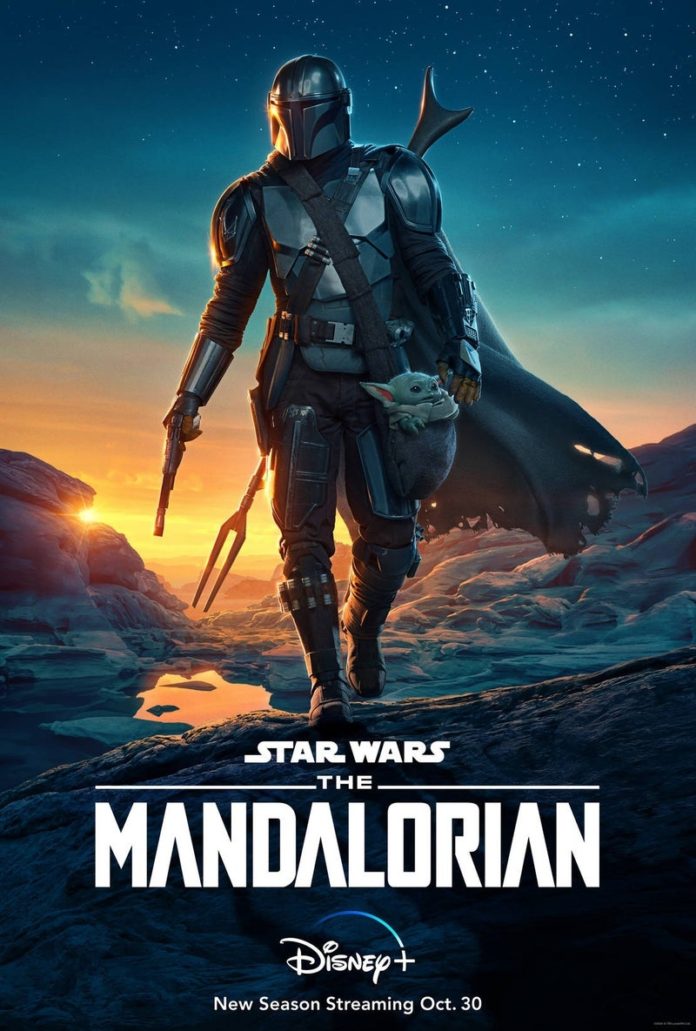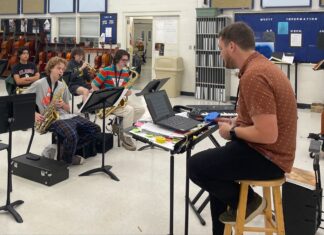Through The Mandalorian, director and writer Jon Favreau, of the 2014 Star Wars Rebels TV series, expanded his imagination of the Star Wars universe, while also preserving George Lucas’s original vision. Along with his team of writers, he has created a gripping dive into the franchise through Din Djarin, a Mandalorian bounty hunter on a quest to return the Child, lovingly known as Baby Yoda, to his homeland.
Beginning with season one, Disney+ has released episodes of the Mandalorian every Friday night. Instead of being able to binge-watch the show in one sitting, fans must wait a whole week to continue the adventures of Mando and Baby Yoda. While season one focused primarily on Mando’s mission to keep the Child out of the wrong hands, season two seems to hint at big plans for the future of the show. In the time of COVID-19, when people lose track of their days, Disney has provided an event that creates a rhythm and highlight to fans’ weekly schedule.
Just three episodes into season two, the names of notable–yet peripheral–characters have been folded into the narrative. In episode one, Mando went in search of a Mandalorian on Tatooine but instead found a marshall in Vaskar armor with a pest problem. In exchange for his assistance, the marshall promised that he would give the armor to Mando. The task is a success, and, at the end of the episode, as Mando speeds off with the armor, a familiar figure watches from afar: an aged Boba Fett.
In addition to Boba Fett, the name of a seldom recalled character is mentioned: Ashoka Tano, Anakin Skywalker’s padawan. She disappeared when she was framed for murder and cast out of the Jedi order. Her name is brought up by Bo-Katan, a Mandalorian who tells Mando that Ashoka will help him find the Child’s Planet of origin–something he has been pursuing since the end of season one.
Both of these cameos, in addition to the appearance of numerous creatures, aliens and Bo-Katan, build unexpected connections to the Star Wars mythology.
The pacing of the series has been, for the most part, intentional. Episode one? Great. Episode two? Not too great. Two seemed like a filler episode, 45 minutes dedicated to Mando’s ship crashing on an ice planet and Mando being chased by giant spiders. Episode three? Good, although it was shorter than usual. Season one provided many developments within eight episodes, and fans should be able to expect the same from season two.
In addition to pacing, the visuals of the series are quite pleasing to the eye. With a mix of live action actors and computer generated aliens, creatures and effects, every frame of the series seems to be a picturesque photo opportunity. Coincidentally, the directors must have realized this also, for the end credits feature concept art from different scenes throughout the episode.
Similarly to the Star Wars movies, The Mandalorian has its own unique soundtrack. The theme song specifically, composed by Ludwig Gӧransson, maintains a tribal sound throughout. It is soon accompanied by orchestral instruments that sprinkle the essence of Jon Williams (the original Star Wars composer) into the soundtrack and gives off the traditional Star Wars sound.
Whether or not you were hooked by previous Star Wars movies or TV shows, The Mandalorian is unique in that it does not require an extensive knowledge of the franchise. Full enjoyment can be derived from watching this show without previous experience, although the easter eggs within the show have Star Wars fans and newcomers alike anxiously waiting for the next episode.












